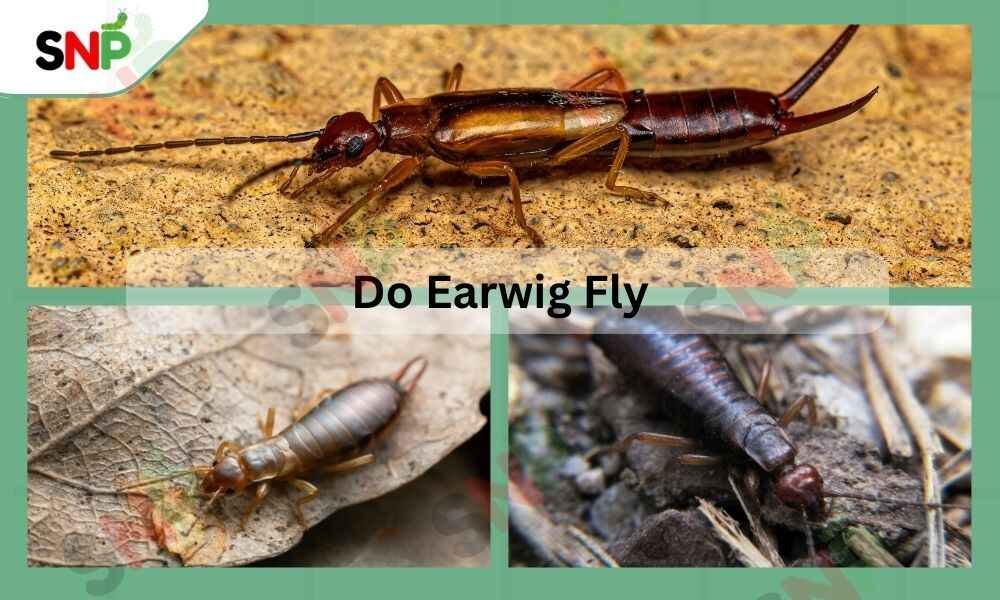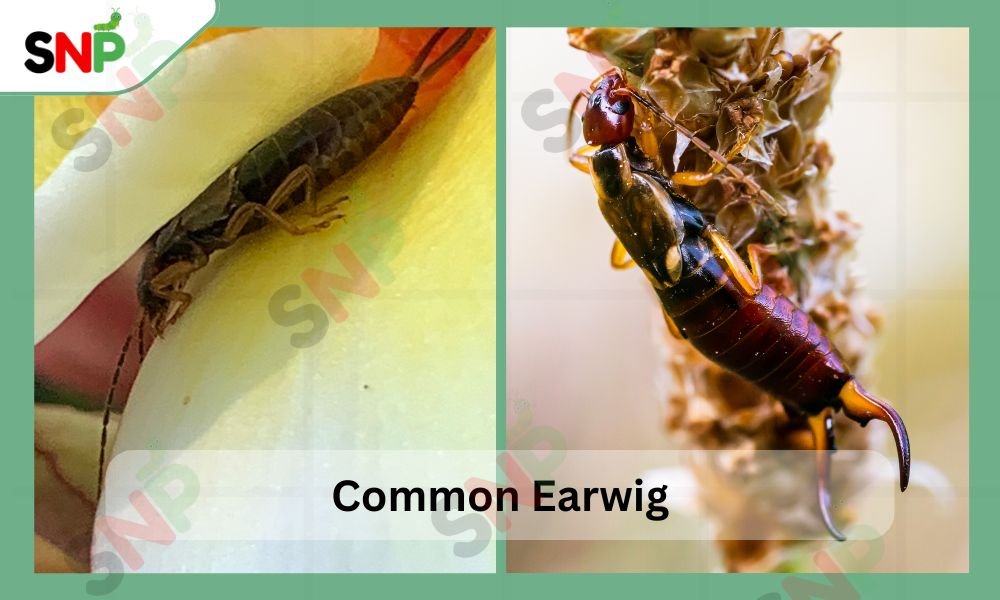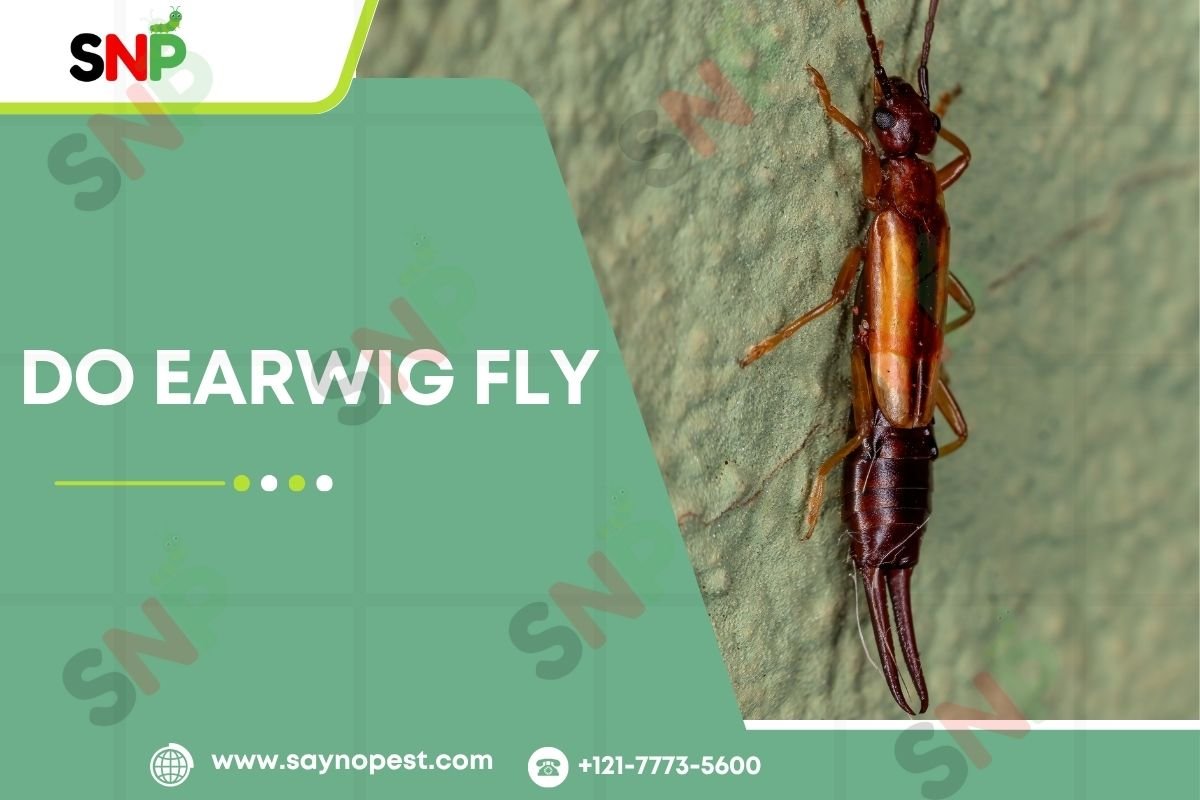Have you ever tried to figure out do earwig fly? You haven’t. Bizarrely shaped pincers and ears of insects still serve their purpose to confound homeowners across the US past forty years. It is a fact that earwigs often caught crawling through the gardens and occasionally invading the homes, but their flying abilities are still one of nature’s best-kept secrets.
The Amazing Truth About Earwig Flight
Beholders may surprised to hear that early insects have the ability to flit in the skies; however, the truth is a lot more complex than they initially assume. The majority of the earwig varieties have wings, but the instances of them flying are very few. The very name of their biological order, Dermaptera, comes from a Greek word that describes the structure of their wings only.
One example is the fact that they tend to have two wing pairs: the front one (or tegmina) being short, thick, and leathery, while the rear is of a large, membranous, and fan-like shape. Nevertheless, earwig fliers are very clumsy and they usually perform only a few quick flights. Their wings are much less efficient in terms of power compare to those of other flying insects like the housefly.

The Incredible Wing-Folding Engineering
Earwig wings are a splendid example of the natural world’s genius for engineering and design as they have a super-efficient replot system allowing them to retract their wings to a fraction of their original size. Fully outstretched, earwig wings may be over ten times their folded dimension – one of the most excessive fold ratios in the animal kingdom. This intricate origami-type of folding style enables earwigs to have a totally free movement on land while still having their wings protect beneath the hard covers.
The wings fold through about 20 different fold lines alone, forming a structure so compact that it seems to go against traditional origami rules. The wing joints are also made of a special elastic biopolymer, which is called the protein resilin, that gives wings the ability to go from their fold to open states by the snap without the need for muscle power.
When and Why Do Earwig Fly?
Earwig bugs fly when:
- After disturbances: If their nests get waterlogg or destroyed, earwigs can fly to look for a new place to stay
- Mating purposes: Certain species go flying to find partners during the mating season
- Food seeking: Sometimes, they make short flights to the places where they get food
- Light attraction: Earwigs have been observe flying to the light sources; hence, the moon acts as their guide
One among those is the Labia minor species that even uses its pincers to comb its wings out before every flight, according to the study. The majority of earwig flights made at velocities ranging from 0.2 to 0.5 meters per second; thus, “slow-flying” insects is a suitable classification for them.
Common Earwig Species and Their Flying Abilities

European Earwig (Forficula auricularia)
The European Earwig, the most common species in the gardens of North America, is a very rarely flying creature despite having wings that are well-develop. Normally, it’s not their flying that leads them from one place to another, but they are carry on clothes, lumber, or other commercial products.
Shore Earwig (Labidura riparia)
Shore earwigs, also called striped earwigs, are flight-capable and have even seen flying after they became disturbed. This species can grow to be 30 millimeters long and is consider good for controlling pests because it feeds on other animals. So if you wonder do earwig fly these two types can.
Debunking Common Earwig Myths
The Ear-Crawling Myth
Most people are misinform that earwigs, which are the last thing on their minds, will willingly drive themselves into human ears to deposit their eggs or to dig up their brains. The entry of earwigs into human ears has reported in literature only in very few cases, and they have been classified as localities where the bug entities start to display their names, but this is no different from other small insect species.
Are Earwig Pinches Dangerous?
Usually, an earwig uses its pincers to accomplish the task of defense, capturing prey, or realizing the mating process, rather than to attack humans. Thus, if we consider an earwig as the entity, then its defensive pinching behavior can seen as giving a retreat signal to the aggressor because the pinch is so insignificant and there is no case of the skin being broken. The pinch is not poisonous, and any pain that might arise will be very mild.
Seasonal Earwig Activity Patterns
Earwig populations can wax and wane based on specific weather conditions. A hot and humid summer can make the earwigs breed more than usual and thus, increase the population. The highest temperature and humidity in June particularly suit earwigs to survive and reproduce.
Recognizing the rhythms of earwig populations permits the residents of the house to predict the situation; thus, they can take pre-emptive psychosocial steps.
The Bottom Line on Flying Earwigs
To be honest, Do Earwig Fly. But, they are generally more inclined to crawl and hardly ever get to the air if it’s not necessary. Please note that the wing-folding is their most complex engineering solution of nature, which makes them still have the possibility of flying as well as being ground mobile.
In case you have earwig troubles and you are situated in the US, bear in mind that those insects do no harm to people; in fact, they are even good. Concentrate on moisture control, habitat modification, and natural prevention methods since they will be most effective in the long run. In case that’s not enough, you can always ask the pros to come and deal with the problem. They can also offer you specific help, normally for your situation.
